Enduro Bearings Components: At The Finish – by Guitar Ted
Notice: Enduro Bearings sent over its components in this review for test and review to Guitar Ted Productions at no charge. I am not being paid, nor bribed, for this review, and I always strive to give my honest thoughts and views throughout. See part one HERE

Late in July of this year I received some Enduro Bearings components to install in my bicycles. I chose the Twin Six Standard Rando as my test sled. Previously, I had installed an outboard bearing, Shimano-type bottom bracket in my Singular Gryphon Mk3, which I will also talk about here as well. The introduction to this review can be found HERE.
Since I do not have sophisticated means for testing bearing performance, my aim for this review was to ride the components throughout the Summer and Fall, gain an understanding of how they perform, and gauge their effectiveness as best I could through subjective means. So, that’s somewhat limiting, but I wanted to give an honest assessment up front of what to expect here.
I have 30+ years of experience dealing with bearings for bicycles and thousands of miles of riding experiences with all sorts of bearings, both good and bad. So, take that into consideration as well. In the end, this is my opinion on these products, and your opinion may vary.
Okay, with all that behind us, I am going to take a quick look at each bit I received and give you my take on that particular component in an unvarnished manner. First up are the bottom brackets.

MaxHit Bottom Bracket:
I spoke to this component in the introduction linked above pretty specifically. I won’t bother covering old ground here other than to say that this bottom bracket, at $180.00 plus, is expensive, but in my opinion it is worth every penny. The component has a lifetime guarantee, and I suspect it may last as long as I can ride that bike, or want to. It spins so freely and smoothly, even under extreme pressure with a load as you see here, that I cannot fathom not wanting to buy one of these now for a bike build I planned on keeping around for several years. I mean, don’t bother putting this into a bike you will hardly ever ride, because that smoothness would be a criminal thing to deprive yourself of.
I am only half-kidding. It’s totally eye-opening.

TorqTite PF-30 to 24mm Bottom Bracket:
The TorqTite PF-30 to 24mm conversion bottom bracket I am using in the Twin Six Standard Rando v2 was not quite as impressive. This one has a bit more complexity to my take than the MaxHit bottom bracket did.
So, first off, this bottom bracket spins very freely. I was super impressed right away after installing it by that. Most bottom brackets, when new, exhibit a fair amount of “seal drag” which may get to be less and less as the bottom bracket settles in. However; the TorqTite spun impressively well immediately. It would only get better as I rode it in.
But you will recall that I have mentioned in the introduction to this review (linked above) that typical Shimano bottom bracket has this weird “rumble” to the bearings when you are applying pressure to the down stroke of your pedaling cycle. I noticed something similar here, with the TorqTite, that resembled that feeling I got through the crank arms and pedals with typical Shimano bottom brackets.
It wasn’t the same exact feeling, but it was there, and it made me miss the smoothness of the MaxHit version of an Enduro bottom bracket. So, should you spring for the MaxHit instead? Well, the TorqTite sells for around $200.00, and unfortunately, MaxHit doesn’t come in this configuration. (MaxHit uses the actual outer cup portion as a bearing race whereas TorqTite uses a separate, pressed in bearing) You could upgrade to the Ceramic bearing version for an extra $80.00 or so, (depending upon retailer), but here is the kicker: A Wheels Manufacturing PF-30 to 24mm bottom bracket feels pretty good and costs $80.00 less than a Torqtite bottom bracket.
If the free-spinning nature of the TorqTite suits you, then get that. It definitely is a noticeable benefit over the Wheels BB.
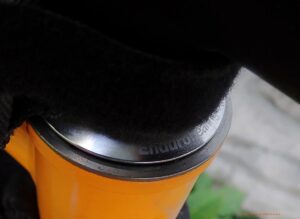
MaxHit Headset:
Here’s a component that you just don’t think about until it starts giving you troubles. Headsets don’t spin much, so bearings seem superfluous on the surface of it. But have you ever ridden a bike with bad headset bearings, or headset bearings that are too tight, or not spinning freely? That makes a bike nearly unrideable.
So, a headset is a critically important part of your bike. Thing is, it is hard to justify spending a lot on one when good, fairly reliable headsets are well below $100.00 these days.
That said, a good, high quality headset will run around $100.00 plus a little, and that’s right where you’ll find the MaxHit headset priced at. What do you get for that sort of expenditure?
Well, you get a stainless steel construction – fully stainless steel – , bomber reliability, and 440C stainless bearings which are sealed in high-pressure grease which adds up to a Lifetime guarantee. The bearings are actually larger than a typical headset’s are, they are angular contact bearings which handle loading better, (most other head sets, including Cane Creek, are not), and all that spreads loads out better and headsets get a LOT of loading.
So, yeah. It isn’t all blingy-anodized and matchy-matchy, so if that is your thing, you won’t be at all interested in this headset. But if you want a high degree of reliability, longer bearing life, and silver is a color you can get behind, then this one is a recommended choice.
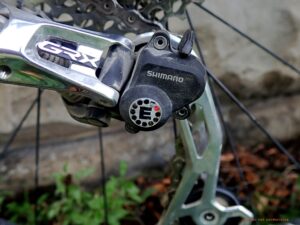
Enduro DirectLine Pulleys:
Derailleur pulleys in the aftermarket are a weird world of innovation and bold claims of efficiency gains. Some have their own proprietary cages to accommodate their bloated diameters. Prices for these visual assaults on our senses can be frighteningly high.
Enduro takes a different approach to these components than many others do. Enduro believes that the original functionality of any rear derailleur is somewhat predicted upon the size of pulleys the manufacturer designed for their particular models of rear changers. Change that and you run the risk of getting poor shifting, or not as good a shifting performance as you might with standard/stock sized pulleys.
Enduro uses a special Delrin material to machine the pulleys out of that is Teflon infused. Enduro claims that this interfaces with the chain more efficiently than titanium or aluminum does, increasing overall drive train efficiency. They also claim this will get better the more miles that you ride the pulleys. The pulleys are guaranteed against corrosion for life.
Okay then- “What did I think?” Well, these pulleys certainly aided in the free-running feel of this drive train. Shifting was always spot-on as long as my cable was adjusted right, so no worries with the pulleys there at all. I guess what I saw that impressed me most was that the typical ring of gunk that builds up on most Nylon/plastic pulleys was never noted with these DirectLine pulleys. They were dusty, for sure, but I never saw one bit of build-up on them. That’s amazing right there.
Now, the pulleys I put into my GRX rear derailleur cost $140.00. That’s twenty bucks more than the rear derailleur cost alone. So, does doubling the cost of your rear mech make any sense?

When I spin this drive train backward it spins a few times easily and comes to a halt. My other drive trains? Maybe the drive train will spin around one and a half times. Efficiencies are hard to gain in high-end bicycles without spending a lot of time and money on yourself or money on your bicycle. If I were racing? This makes sense to have these pulleys. If I am toodling around and riding for fun?
That’s a tougher answer to come up with then. It comes down to appreciation for the claims of Enduro Bearings. I can only tell you that these pulleys, (and the bottom bracket), make a discernible difference in how easily the parts move. And again – you shouldn’t probably do this to a bicycle you’d hardly ever ride or to a lower quality bike. That doesn’t make any sense as there are likely several more meaningful upgrades to make in those cases, or a better, more used bike in your stable to utilize this stuff on.
I’d say that if the bike is a quality piece that is going to see significant use, and if you care about efficiency, then the answer is yes. Then these pulleys are worth the extra expense.
Conclusions:
MaxHit Shimano-style outboard bearing bottom bracket? All day, every day. I’m sold. Recommended highly. Even despite the expense. I have gone through several cheapo Shimano BB’s which would easily equal what I would pay for a single purchase of the MaxHit BB and I’m getting a smoother bottom bracket to boot. One bottom bracket versus many and smoother? You know the answer.
The TorqTite bottom bracket I have a harder time with. It is not as smooth feeling as the MaxHit bottom bracket and it is expensive. I mean, it’s a fine bottom bracket, but it is harder to recommend it over less expensive options.
The head set is a no-brainer if you don’t care about fashion. If you do? Then look elsewhere. If you just do not care about headsets? Get a Cane Creek 40.
The Enduro Bearings DirectLine pulleys are not cheap. But….. If you have a high-end rear mech they are worth the dough. They don’t gather the gunk, which is a big deal to me, and they are guaranteed against corrosion, which is impressive. They do spin very freely and the claims of chain to pulley efficiencies make more sense to me than some of the wattage savings claims other aftermarket cage/pulley purveyors make. Plus, my mech’s design is preserved so there is no loss of shifting performance or messing about with affixing an abomination of a cage to my derailleur.
The pulleys I could convince myself to invest in, but only for a well-used bike or for racing.
Thanks to Enduro Bearings for the components and a chance to review them. For more information on Enduro Bearing products see their website here: https://cycling.endurobearings.com/


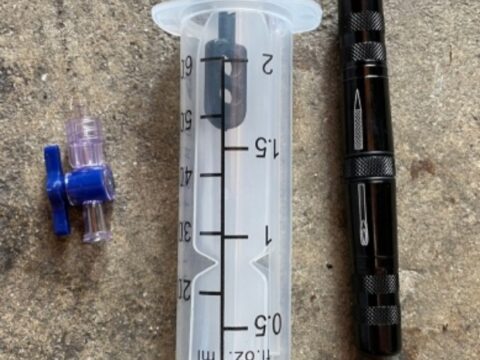
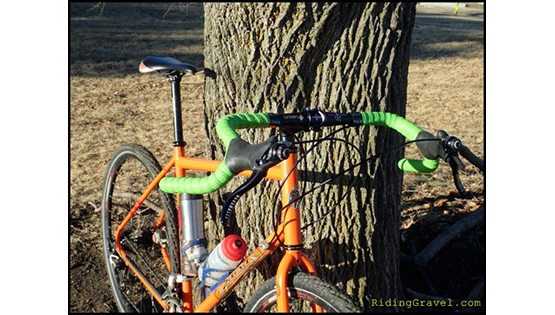
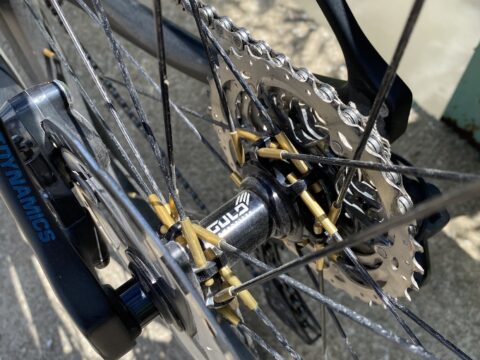
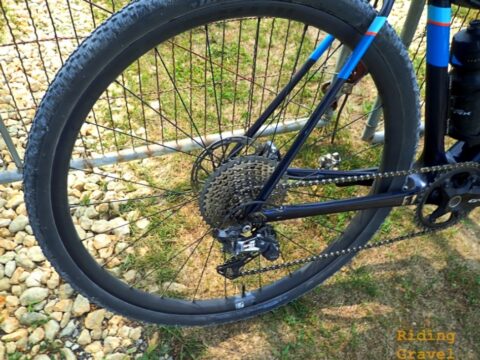

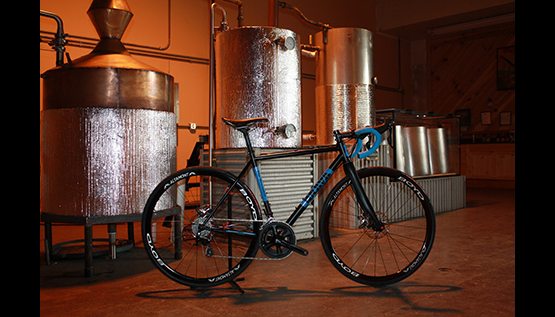



If I am reading the Enduro site correctly, the straight 1-1/8” EC headset is LESS expensive than the Cane Creek 40.
Wish I had seen that before my latest build